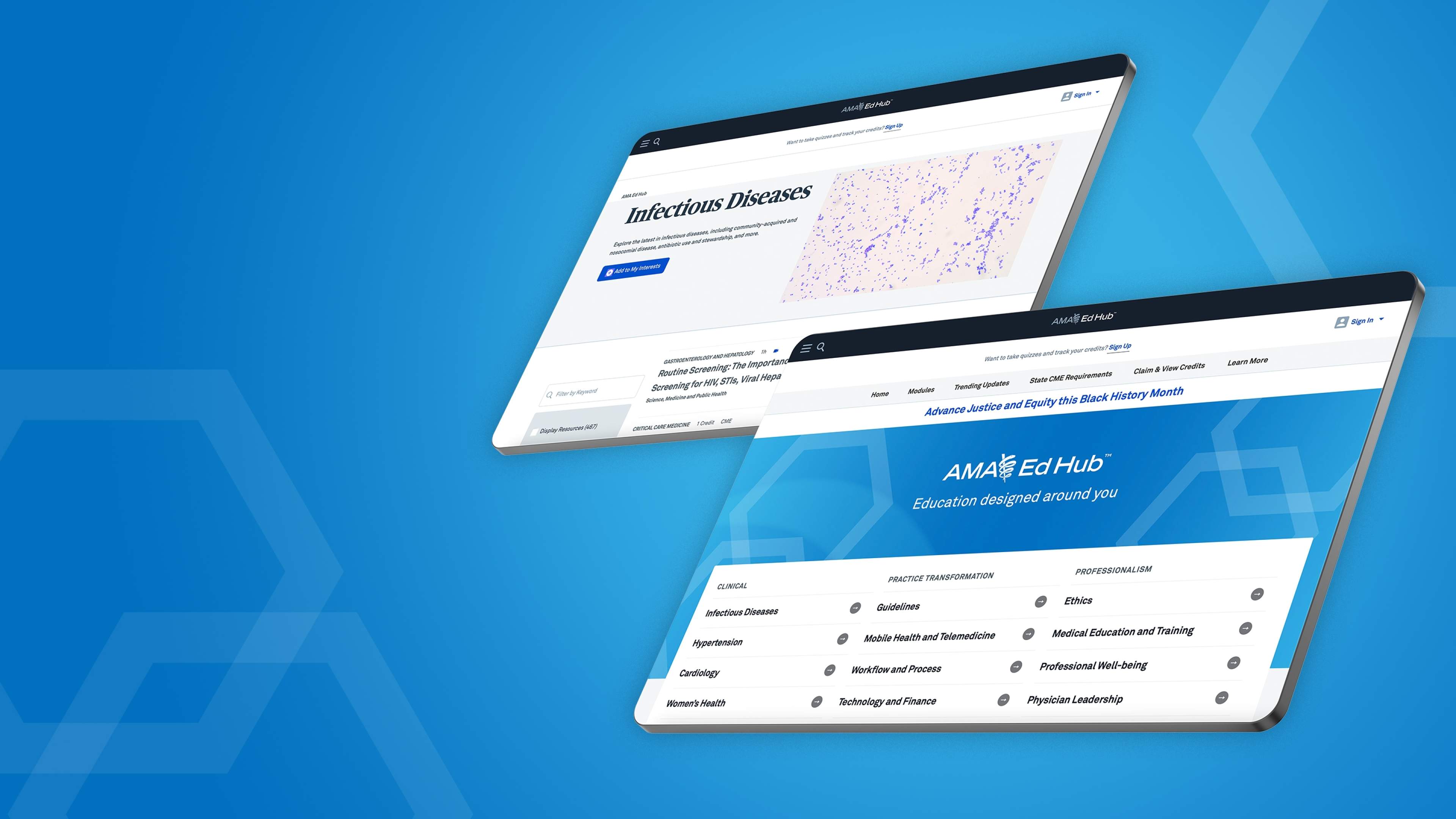Daniel Pickhardt, Director of New Product Development at the JAMA Network
Helping AMA healthcare workers get course credit faster

“TXI orchestrated this thing really, really well. All of the communication infrastructure was already built out, and it felt really natural.”
The American Medical Association (AMA) is one of the oldest—and largest—professional organizations in the United States. Representing nearly 300,000 physicians and medical students, the AMA supports its members by helping them achieve their continuing medical education (CME) and maintenance of certification (MOC) requirements.
For years, the AMA’s Ed Hub platform has played a central role here: it’s where members take courses for CME credits or MOC points. But if a physician was board-certified in three different states, they’d have to manually report completed courses to every state medical board. That meant more time spent on administrative work and less time treating patients.
What’s more, Ed Hub records weren’t always up to date—a common problem when a member earned credits as a student and a resident using two separate accounts. They had to call or email the AMA for support to update their record.
The AMA wanted to make life easier for its members. The vision: optimize Ed Hub’s back end to automatically share and update CME and MOC data. To translate that vision into reality, the organization turned to TXI.

The challenge
Right data, right member, right system
(Warning: prepare for acronym overload!) The AMA had already integrated Ed Hub with one third-party system to share MOC credits or activities with certain state and specialty medical boards. Now, the AMA also wanted to directly send CME activity data to other LMSes that members used for CME. That meant our team needed to…
Pull data from various Ed Hub programs (for medical students, residents, fellows, and certified physicians).
Reconcile data across multiple accounts—crucial for that student-to-resident use case where the same person has multiple emails.
Share data with the right LMS and the right medical boards.
There were also a few logistical aspects to consider. The AMA is a sprawling organization, with stakeholders in every department from legal to IT. To make Ed Hub a more helpful tool for members, we needed to embrace a shared strategy—and move in lockstep at every stage of development.

TXI really invested in understanding our universe. They dove in really hard to understand the market. It was a great way to start the process.
The solution
Auto-reporting through integrations (and no more Wednesday meetings!)
TXI and the AMA worked together to integrate Ed Hub with multiple LMSes, including Absorb. In particular, we focused on sharing CME data from two Ed Hub programs: UCEP and GCEP. This way, when a graduate completes a CME activity in Ed Hub, it's automatically reported to Absorb to count towards their curriculum.
Throughout our partnership, we looked for opportunities to strengthen the ties on our blended team. The more collaboration and trust we could build, the faster we could upgrade Ed Hub and ease the burden on AMA members.
In practice, that involved lots of experimentation to find a working and communication style that satisfied everyone. We…
Tested new collaborative tools. Miro boards were a big hit: they helped us visualize everything from dev progress to upcoming PTO. They also helped ensure we were solving the right problem. To that end, we used Miro to create flowcharts, ideate, brainstorm, and gut-check solutions, planning, and progress.
Embraced operational best practices. We set a steady release schedule, for instance, to maintain a healthy pace of work.
Dropped what wasn’t working. For example, we cut Wednesday meetings to give folks more time for deep work.
These incremental changes helped us work faster and better together. And over time, our relationship evolved into a robust strategic partnership that could nimbly support the needs of AMA members and internal stakeholders.

Your data holds insights that can make every hard decision easier. Every complex situation clearer. Every person on your team smarter. How do you unlock those insights? The Data Maturity Accelerator.
The outcome
Less admin work for healthcare professionals—and a strategic partnership
Today, AMA members can automatically share CME credits and MOC points with 15 medical boards—and the list is only growing.
But our work isn’t over. Going forward, we want to make it easier to merge Ed Hub accounts and reconcile CME data. This way, members can transition from medical school to residency or from state to state without “losing” credits in the shuffle.
We also want to create a single source of truth for all CME activities offered by Ed Hub, not just coursework. So when a member attends a conference or presents a clinical case, they’ll be able to log that in Ed Hub and share the activity with the right boards.
As we’ve made headway on these projects, the AMA has turned to TXI to tailor each solution to the right problem. They’ve even invited us to Chicago on-sites so we can collaborate in person. The overarching goal: working together to build a headache-free user experience.
If you have a similar vision at your organization, let’s talk—we’d love to start a conversation.


Find out how intelligent solutions can accelerate growth for your organization.


